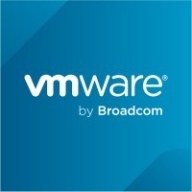

vRealize Network Insight and LogicMonitor are leading network monitoring solutions with unique strengths. vRealize Network Insight has the upper hand in detailed visibility for network traffic, while LogicMonitor excels in creating user-friendly visual interfaces and interactive reports.
Features: vRealize Network Insight provides microsegmentation, insights into network flows, and application interactions, which are beneficial for firewall establishment and application migrations. LogicMonitor offers customizable dashboards, robust data visualizations, and flexibility in displaying vital network information, which allows seamless interaction for non-technical users.
Room for Improvement: vRealize Network Insight needs improvements in pricing, third-party integrations, and documentation access. Users wish for enhanced application identification and intuitive rule creation. LogicMonitor users seek better reporting, support for complex environments, improved mapping features, more automation in remediation, and a simpler licensing model.
Ease of Deployment and Customer Service: vRealize Network Insight is primarily on-premises with excellent technical support, appealing to industries that require robust on-premises solutions. LogicMonitor supports hybrid, on-premises, and cloud deployments. It is praised for responsive customer service, though some users note regional variability in service.
Pricing and ROI: vRealize Network Insight is seen as expensive due to its per-node pricing model but offers significant ROI through reduced troubleshooting time and improved management. LogicMonitor is competitively priced with a flexible licensing model, delivering good value for small and large enterprises seeking network monitoring solutions without high costs.
The return is more of value and savings in preventing costly downtime, making the savings of about $60,000 which we would have lost without LogicMonitor, and in IT staff efficiency, we save approximately 15 hours a week.
I can definitely notice a difference in our posture, uptime, and ability to solve problems and resolve outages much quicker since we have had LogicMonitor in place.
Customer support is on point and very well trained.
The product mostly just works without issues.
It's difficult to find necessary documentation, open tickets, and get support.
We are paying too much for technical support from VMware.
They are not licensed, so you could deploy one collector or 1,000 collectors for the same cost.
It is very stable. I have never seen LogicMonitor itself go down.
We are managing that one but usually we have an API connector between our firewall vendor and our VMware NSX.
I wish the user interface would be customizable to allow users to create personal context-specific workspaces to hide irrelevant data, rather than trying to have a one-size-fits-all interface.
The container monitoring seems to be really behind compared to some bespoke cloud-native monitoring solutions that are designed around Kubernetes, containers, and ephemeral environments.
Broadcom should improve by going back to what was working before, offering the suite of tools that clients actually use, and allowing clients to decide the best options for them.
Broadcom is known for increasing product prices, making them expensive compared to what people used to pay.
The dynamic alerting and root cause analysis have helped us fix issues before they cause a full-blown outage or degrade performance for end users.
If you need to troubleshoot, or if the Logic Module does not work exactly as needed, you can go in, look at the code, and fork that Logic Module to adjust the Groovy code to do exactly what you need.
One of the biggest problems with VMware NSX is logging, and vRealize Network Insight helps by providing comprehensive logs.
| Product | Market Share (%) |
|---|---|
| LogicMonitor | 2.1% |
| vRealize Network Insight | 0.5% |
| Other | 97.4% |


| Company Size | Count |
|---|---|
| Small Business | 11 |
| Midsize Enterprise | 10 |
| Large Enterprise | 9 |
| Company Size | Count |
|---|---|
| Small Business | 11 |
| Midsize Enterprise | 9 |
| Large Enterprise | 41 |
LogicMonitor offers flexible IT monitoring with customizable dashboards and robust alerting capabilities. It integrates seamlessly with third-party apps like ServiceNow and provides a single-pane view for diverse IT environments, aiding in proactive issue resolution and enhancing operational efficiency.
LogicMonitor stands out with its capability to monitor diverse infrastructures including Cisco Voice systems, data centers, and virtual environments. Supporting servers, storage, networking devices, and applications, it provides seamless integration with cloud services like AWS and Azure. Users leverage its scalability and flexibility, benefiting from dynamic thresholds, anomaly detection, and detailed visualization. All these features contribute to improved management of IT assets and streamlined operations. Users suggest improvements in mapping, reporting, and automation for remediation, desiring more customizations and an expansive application performance monitoring toolset.
What are LogicMonitor's key features?LogicMonitor is widely implemented across industries, providing monitoring for infrastructure in sectors like telecommunications, cloud computing, and managed services. Managed service providers particularly value its ability to track client environments, deliver proactive alerts, and generate comprehensive reports, while its integration with cloud platforms like AWS and Azure offers users centralized management and visibility into IT assets worldwide.
VMware vRealize Network Insight delivers intelligent operations for software-defined networking and security. It helps customers build an optimized, highly-available and secure network infrastructure across multi-cloud environments. It accelerates micro-segmentation planning and deployment, enables visibility across virtual and physical networks and provides operational views to manage and scale VMware NSX deployments.
We monitor all IT Infrastructure Monitoring reviews to prevent fraudulent reviews and keep review quality high. We do not post reviews by company employees or direct competitors. We validate each review for authenticity via cross-reference with LinkedIn, and personal follow-up with the reviewer when necessary.